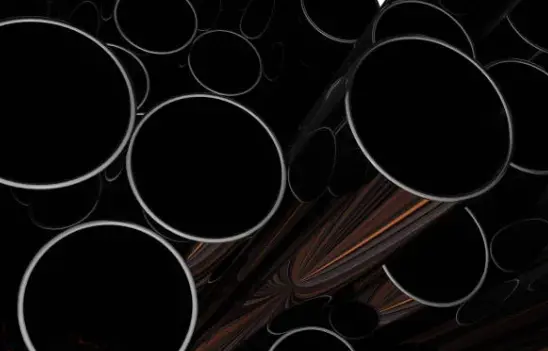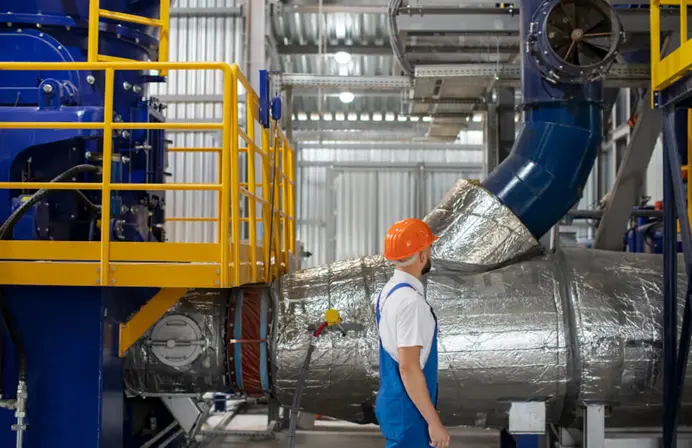Top Industries That Depend on 321 Stainless Steel Tube—and Why It Matters

Some industrial sectors operate under conditions where material failure isn’t just costly—it’s catastrophic. High-temperature environments, repeated welding operations, and aggressive chemical exposure create scenarios where standard materials simply don’t hold up. When equipment fails in these settings, the consequences ripple through production schedules, safety protocols, and bottom lines in ways that most organizations can’t afford to ignore.
The 321 stainless steel tube has become a go-to solution for industries facing these exact challenges. This titanium-stabilized grade addresses specific weaknesses found in other austenitic stainless steels, particularly when heat and welding enter the picture. Engineers and procurement teams in several critical sectors have learned that choosing the wrong tubing material means dealing with premature failures, unexpected shutdowns, and repair costs that quickly spiral out of control.
Chemical Processing and Petrochemical Operations
Exposure to Corrosive Compounds: Chemical plants and petrochemical facilities deal with aggressive acids, caustic solutions, and oxidizing agents that attack conventional piping materials. The presence of titanium in 321 stainless steel creates carbide formations that prevent chromium depletion at grain boundaries. This characteristic matters because chromium depletion leads to intergranular corrosion, which causes unexpected tube failures in service. Plants running sulfuric acid processes or handling chloride-containing streams have found this grade particularly reliable.
Thermal Cycling Resistance: Processing equipment experiences constant heating and cooling cycles during startups, shutdowns, and normal operations. These temperature swings create stress points in tubing systems that can propagate cracks over time. The stabilized structure of 321 resists this type of degradation better than unstabilized grades like 304 or 316. Facilities that previously faced cracking issues in heat exchanger tubes often switch to 321 and see those problems disappear.
Welded Joint Performance: Chemical processing systems require extensive welding during installation and maintenance, which introduces heat-affected zones vulnerable to corrosion. Standard austenitic grades develop sensitization in these areas, creating weak points that fail prematurely. Grade 321 maintains its corrosion resistance even after welding, reducing the need for post-weld heat treatment in many applications.
Oil and Gas Sector Applications
High-Temperature Service Conditions: Refinery operations and gas processing units operate at temperatures ranging from 800°F to 1500°F in various process streams. At these temperatures, oxidation resistance becomes critical for tube longevity. The 321 alloy maintains a protective oxide layer that prevents scaling and metal loss even during prolonged exposure. Heater tubes and furnace components in these environments benefit significantly from this oxidation resistance.
Pressure Vessel Requirements: Oil and gas processing involves high-pressure systems where tube integrity directly impacts safety. The mechanical properties of 321 stainless steel—including its tensile strength and creep resistance—meet the demands of these applications. Engineers specify this grade for pressure vessels, heat exchangers, and piping systems where failure could result in releases or explosions.
Food Processing at Elevated Temperatures
Sanitary High-Heat Applications: Food processing operations that involve sterilization, pasteurization, or cooking require materials that maintain cleanliness while withstanding heat. Dairy processors, beverage manufacturers, and prepared food facilities use 321 tubing in systems operating above 800°F. The material resists scaling and oxidation while meeting sanitary standards, which makes it suitable for direct product contact in high-temperature zones.
Steam System Compatibility: Industrial food processing relies heavily on steam for heating and sterilization, creating conditions where tube surfaces face constant moisture and temperature stress. The stabilized structure prevents the grain boundary issues that lead to stress corrosion cracking in steam environments. This reliability translates to fewer unexpected shutdowns during critical production runs.
Aerospace and Exhaust Systems
Aircraft Engine Components: Aerospace applications demand materials that perform reliably under extreme conditions while minimizing weight penalties. Turbine engine exhaust systems, manifolds, and ducting utilize 321 stainless steel tubing because it maintains strength at temperatures exceeding 1200°F. The aviation industry’s strict quality requirements mean that material selection directly impacts safety certifications and operational approvals.
Automotive Exhaust Durability: High-performance automotive exhaust systems experience thermal cycling, vibration, and corrosive exhaust gases simultaneously. Race teams and performance vehicle manufacturers choose 321 tubing for headers, intermediate pipes, and turbocharger connections. The material withstands the punishment of repeated heat cycles without cracking or losing structural integrity, which cheaper alternatives simply can’t match.
Industrial Boilers and Heat Exchangers
Superheater and Reheater Tubes: Power generation facilities and industrial boiler systems use 321 in superheater sections where steam temperatures reach extreme levels. The tubes must resist both internal steam-side oxidation and external fireside corrosion while maintaining mechanical strength. Plants that switched from carbon steel to 321 in these applications report significantly extended tube life and reduced maintenance intervals.
Heat Recovery Applications: Waste heat recovery systems capture thermal energy from exhaust streams, creating demanding conditions for heat exchanger tubing. The 321 grade handles the temperature differentials and corrosive combustion products found in these systems. Facilities implementing heat recovery find that tube reliability directly affects the economic payback of their energy efficiency investments.
Critical Specifications for Industrial Buyers
Material Certification Verification: Buyers should verify that tubes meet ASTM A213 or A269 specifications, depending on the application requirements. Mill test reports must confirm chemical composition, particularly titanium content, which should be at least five times the carbon content. Mechanical property testing results, including tensile strength and hardness values, need to fall within specified ranges for the grade.
Surface Finish Considerations: Application requirements dictate whether bright annealed, pickled, or mechanically polished finishes are appropriate for your tubes. Surface condition affects both corrosion resistance and cleanability in sanitary applications. Some environments require electropolished surfaces to minimize contamination risks and facilitate cleaning procedures.
Dimensional Tolerances and Testing: Wall thickness tolerances become critical in pressure applications where minimum wall calculations determine safe operating limits. Non-destructive testing such as eddy current or ultrasonic inspection may be necessary depending on code requirements. Buyers working with critical applications should specify additional testing beyond standard mill testing to ensure tube integrity.
Conclusion
Industries facing high-temperature service, repeated welding operations, or oxidizing atmospheres have specific material needs that standard stainless grades can’t address. The consequences of choosing inadequate tubing—premature failures, unplanned shutdowns, and safety risks—make material selection a decision that affects operational success for years. If your applications involve conditions where standard materials have failed or show signs of degradation, evaluating 321 stainless steel tube specifications against your requirements makes practical sense. Consult with materials engineers and review your operational data to determine whether this stabilized grade offers the performance characteristics your systems demand.
Also Read






